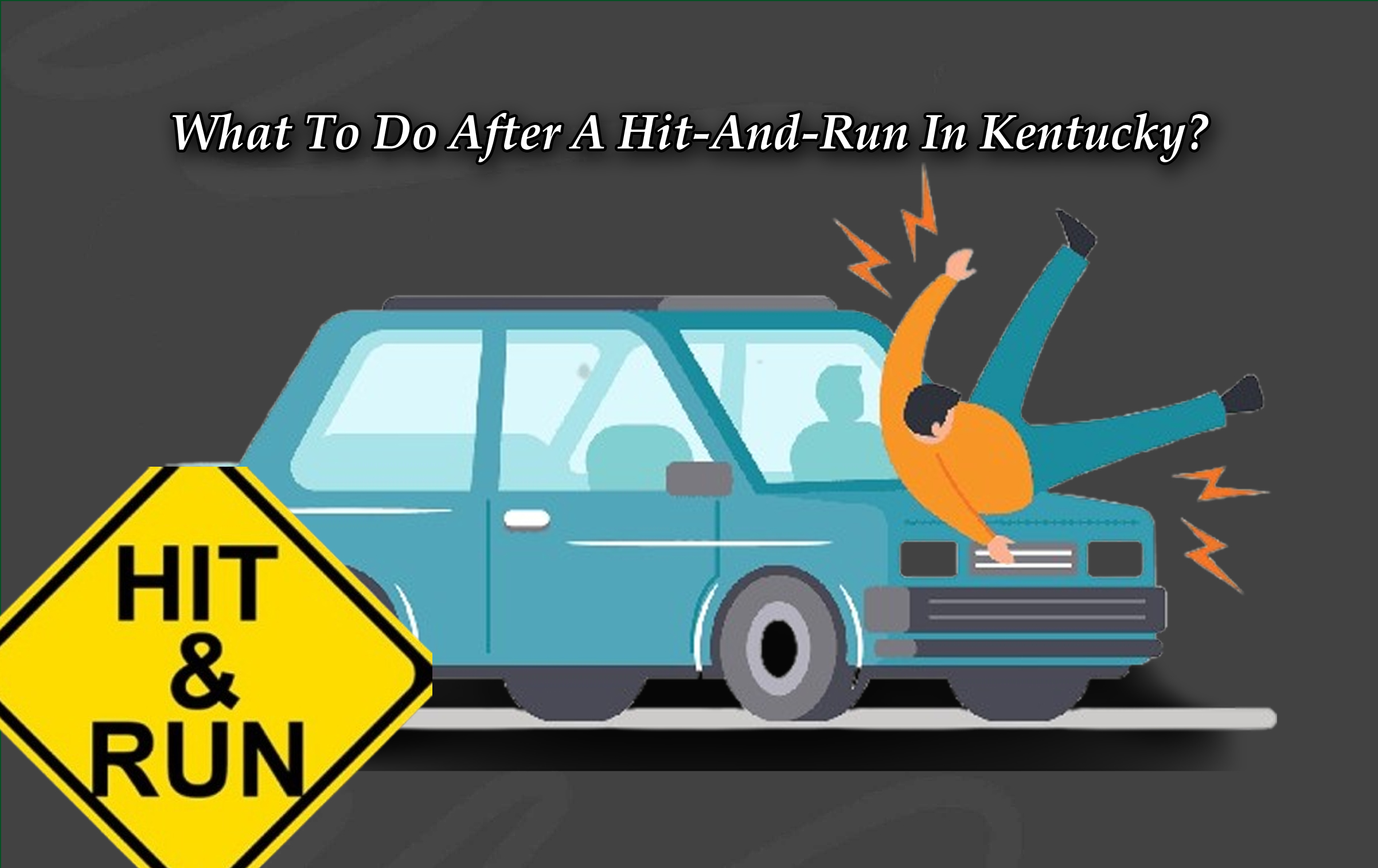
What should I do after a hit-and-run in Kentucky? Hit-and-run incidents can leave victims feeling helpless, confused, and unsure of how to proceed. In Kentucky, the law requires drivers involved in an accident to stop and exchange information.

Unfortunately, not all drivers comply with this rule, making it essential for victims to know the next thing to do.
However, understanding the legal and practical measures after a hit-and-run can make a significant difference in the outcome.
From ensuring your safety and gathering evidence to navigating legal and insurance processes, each action contributes to protecting your rights and recovering damages.
By staying informed, you can overcome the challenges of a hit-and-run incident and move forward with confidence.
Steps To Take After a Hit-and-Run
If you are an unfortunate victim in the scheme of a hit-and-run, you are not completely helpless. Here are some swift actions to take in this scenario:
Stay Calm And Assess The Situation
After any accident, remaining calm is a crucial factor. In a hit-and-run scenario where the other driver has fled, your safety and the safety of others involved should be your top priority. Start by assessing your surroundings, check for injuries, and move to a safe location if possible.
- Check for Injuries: Ensure you and your passengers are unharmed. If anyone is injured, call 911 immediately
- Move to Safety: If your vehicle is in a dangerous location, such as the middle of the road, move it to the shoulder if possible.
- Avoid Chasing the Other Driver: Attempting to chase the fleeing vehicle can be dangerous and may lead to further incidents.
Gather Information
While the other driver may be gone, collecting as much information as possible is vital. Any important detail you provide to law enforcement can help track down the offender.
- Vehicle Description: Note the make, model, color, and license plate number if visible.
- Time and Location: Record the exact time and location of the accident.
- Witnesses: Speak to bystanders who may have seen the incident and collect their contact information.
Report The Incident
In Kentucky, it is a legal requirement to report accidents to law enforcement if there is property damage, injury, or death. Reporting a hit-and-run is especially critical to begin the investigation process.
- Call the Police: Provide the details of the incident, including added information about the fleeing vehicle and potential witnesses.
- Obtain a Police Report: The police report will serve as an official document for your insurance claim and legal proceedings.
Legal Implications Of A Hit-and-Run In Kentucky
Kentucky takes hit-and-run incidents seriously. Fleeing the scene of an accident is a criminal offense and can result in severe penalties for the offender. Here’s a look at some implications of this drastic scene:
- Misdemeanor Charges: If the accident only involved property damage, the offender may face misdemeanor charges.
- Felony Charges: If the accident resulted in injury or death, the charges escalate to a felony, carrying harsher penalties.
Your Legal Rights As A Victim
As a victim, you have the right to seek compensation for damages and injuries. This can be pursued through:
- Criminal Proceedings: Law enforcement may press charges against the offender if they are identified.
- Civil Claims: You can file a lawsuit against the offender for damages, including medical bills, lost wages, and pain and suffering.
Filing An Insurance Claim After a Hit-and-Run
Kentucky follows a no-fault insurance system, meaning your own insurance policy will cover your medical expenses and other costs regardless of who was at fault. This simplifies the process for victims of hit-and-run accidents.
- Personal Injury Protection (PIP): PIP coverage is mandatory in Kentucky and provides immediate financial assistance for medical bills and lost wages.
- Uninsured Motorist Coverage: If you have uninsured motorist coverage, it can help cover damages not included in your PIP.
Steps To File Your Claim
If you are ready to file a claim with your insurance agent, here’s what you do:
- Contact Your Insurance Provider: Notify your insurer as soon as possible after the accident.
- Provide Documentation: Submit the police report, medical records, and any other evidence you gathered.
- Work with an Adjuster: Your insurer will assign an adjuster to evaluate your claim and determine compensation.
How To Prevent Future Hit-and-Runs
To avoid further drastic scenes ahead of time, here are some preventive measures you can carry out to prevent any future hit and runs:
Invest In Technology
Modern technology can play a significant role in protecting yourself from future hit-and-run incidents.
- Dash Cameras: Installing a dash camera in your vehicle provides video evidence that can be invaluable in identifying fleeing drivers.
- Parking Sensors and Cameras: These can help prevent minor accidents and record incidents when your vehicle is unattended.
Practice Defensive Driving
Adopting defensive driving habits can reduce the likelihood of being involved in a hit-and-run. Always stay aware of your surroundings, maintain a safe distance from other vehicles, and avoid aggressive driving behaviors.
With these in place, you are well on your way already half safe from unpredictable disasters in a hit-and-run scene.
Frequently Asked Questions
What Should I Do If I Didn’t Witness The Hit-and-Run But Found My Car Damaged?
If you discover damage to your parked car, document the scene by taking photographs, and report the incident to the police. Next, notify your insurance provider and provide any evidence, such as surveillance footage or witness accounts.
Can I Still File A Claim If The River Is Never Found?
Yes, your no-fault insurance and uninsured motorist coverage can help cover damages even if the offender is not identified.
How Long Do I Have To Report A Hit-and-Run In Kentucky?
You should report the accident to law enforcement immediately. Additionally, check your insurance policy for specific time limits on filing claims.